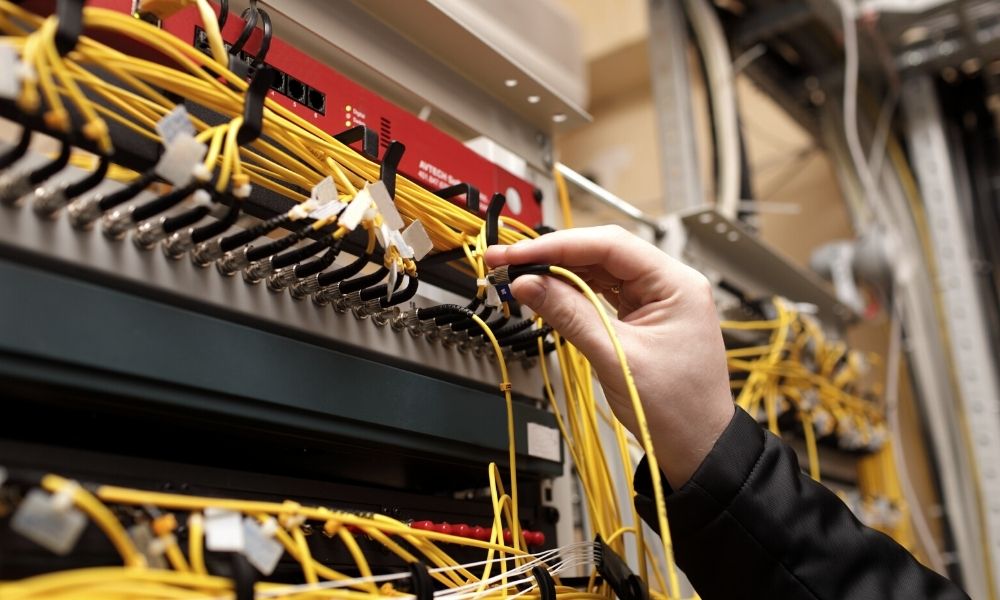
October 12 2022
Modern problems require modern solutions. By this, we imply that every modern workplace and household requires an impeccable computer network and a good internet connection. While copper cables do well in creating a good connection, there’s nothing better than fiber optic cables. They transfer info with light pulses reflecting off tiny glass tubes.
Having said that, many people, despite installing a fiber optic cable network, struggle with radio-signals interference and sluggish network speed. It might be due to an incorrect fixture of the fiber optic cable.
The majority of users have prevailed that the use of fiber optics eliminates disturbance and improves performance. What a lot of them don’t know is the proper fiber optic cable installation.
Fiber optic cables are widely known as the future of internet connection worldwide. Not only do they grant high-tech connectivity, but they help stabilize your cable and telephone connection. However, even a slight fault during installation can create a mishap in its productivity.
In this regard, we’ve appeared with workable fiber optic cable installation tips at your disposal. So, the next time you are contacting the best fiber optic suppliers in Dubai, keep these tips in mind for their installation as well.
Take a look at them:
Firstly, create a detailed and written plan of installation. Whether setting it up at home or workplace, create a blueprint for the space and plan for the fiber optic cable installation.
You can also shape a port map, which will assist in placing and connecting the cables. A port map features the names of each port, including patch panels, locations, and hardware. You can use it as a reference guide for any network issues. And so, you’ll identify the node attached to each.
Since fiber is more robust than steel when you pull it straight, it breaks when bent exceedingly. It’s a practice that harms the fibers, maybe instantly, or you’ll observe the outcomes a few years later.
The glass fiber in these wires is fragile, which results in fiber breakage caused by excessive pulling. In addition, you must never twist the lines too much as it can also stress the wires. Therefore, you must keep the tension lowered to the specified limit during fiber optic cable installation.
Every fiber optic cable has a maximum vertical rise, displaying the top tension a thread can bear without any supportive points. It’s a function related to the cable’s weight and tensile strength.
There are two fiber optics types: a single-mode and a multimode fiber cable. And so, both wires are incompatible. You shouldn’t mix up the threads even if you’re working with the multimode one. Such practice will reduce their productivity and fail to work. For this purpose, ensure binding the same fiber optic with cable ties for effortless identification. Likewise, use labels for marking different cords to avoid confusion.
Installation distance influences the speed of the signals and data transferred. While fiber optics can work with short, medium, and long distances, it’s best to align them with the shortest distances possible. However, there are two reasons behind the method.
Firstly, it allows rapid transfer of information. And secondly, a shorter distance minimizes the pull length, diminishing the chances of breaking your cables. In case of running your lines at a longer distance, follow all the instructions for fiber optic cable installation.
Weak fiber optics are more prone to breakage when running long distances. In terms of commercial usage, you can’t avoid running them for long distances or bending them. Fortunately, a lubricant is handy to minimize breakage due to excess pulling. Therefore, you must seek an oil compatible with fiber optic cable.
Fiber optics can easily break if left hanging or subjected to tighter turns. And so, leaving them naked on the ground or walls can reveal them to various hazards. Whether running them horizontally or vertically, use conduits as support. Conduits will support your fibers from sharper edges and prolonged stress. So, always choose flexible tubes with smooth interiors during fiber optic cable installation.
Fiber cables often jump from unmonitored pulleys, so it’s better to keep one person to manage the pulling equipment, one for the supply reel, and one to coordinate all involved in the installation process.
Last but not least, it’s imperative to determine that how much cable lead your network requires. It’s a significant part of the planning phase, where you choose the lead length needed for the job.
In addition, having correct measurements will save you from the frustration of ordering too much or less. In most cases, installation routes aren’t linear. Since you wouldn’t wish to lessen the effectiveness of your fiber optic cable, it’s wise to order an extra amount of threads to cater to the unexpected.
Final Wordings
As network technology is constantly evolving, ensure to update your network to improve the performance of your appliances. While these cables offer the best way to enhance your internet or telephone performance, you must consider the correct ways for fiber optic cable installations. Now, you no longer need to struggle with a slow internet connection since you’ve got the solutions at your fingertips.
Having said that, the quality of your cables matter the most. So, make sure to get them from Malco Technologies. As a leading IT solutions company in Dubai, we facilitate companies with top cabling solutions.